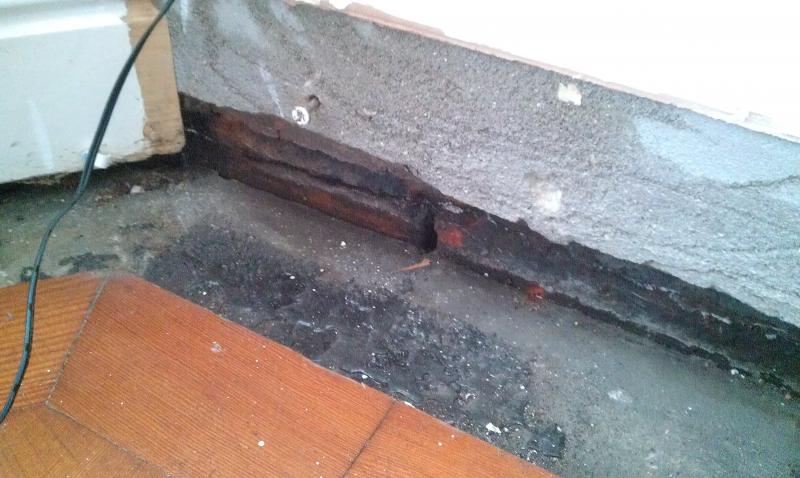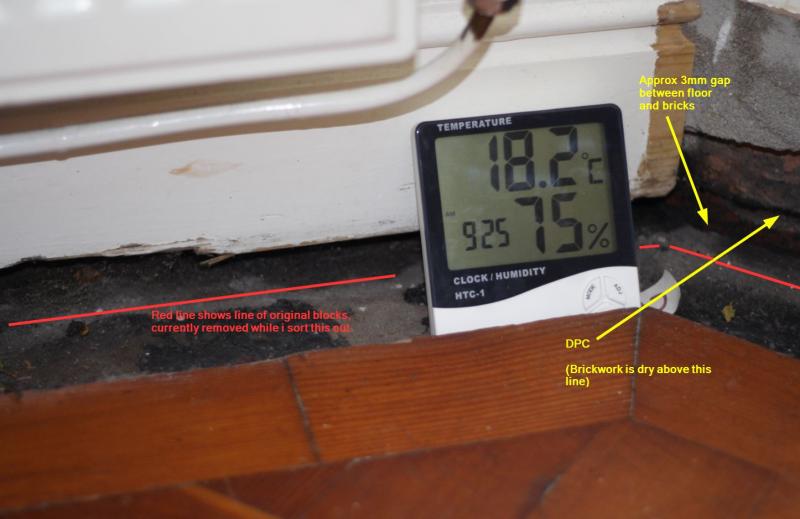Hello
Original floor in 1920/30's bungalow, solid floor is getting damp patches at the wall/floor junction which is causing skirtings to rot where there is excess rubbish accumilated behind the skirting (saw dust from sanded parquet floors I believe). This is also causing woodlouce etc internally.
I've hacked off the skirting and cleaned out in another room to some succes but yet to tackle the worst room. In the past I used roofing felt adhesive.
I am going to tackle the last and worst room shortly, as it smells, but wondered if there is abetter product for lappgin the parquet floor adhesive (bitumen) up to the DPC (bitumen) as currently the wall/floor junction is exposed brick/concrete.
Thanks
Mike
Original floor in 1920/30's bungalow, solid floor is getting damp patches at the wall/floor junction which is causing skirtings to rot where there is excess rubbish accumilated behind the skirting (saw dust from sanded parquet floors I believe). This is also causing woodlouce etc internally.
I've hacked off the skirting and cleaned out in another room to some succes but yet to tackle the worst room. In the past I used roofing felt adhesive.
I am going to tackle the last and worst room shortly, as it smells, but wondered if there is abetter product for lappgin the parquet floor adhesive (bitumen) up to the DPC (bitumen) as currently the wall/floor junction is exposed brick/concrete.
Thanks
Mike




